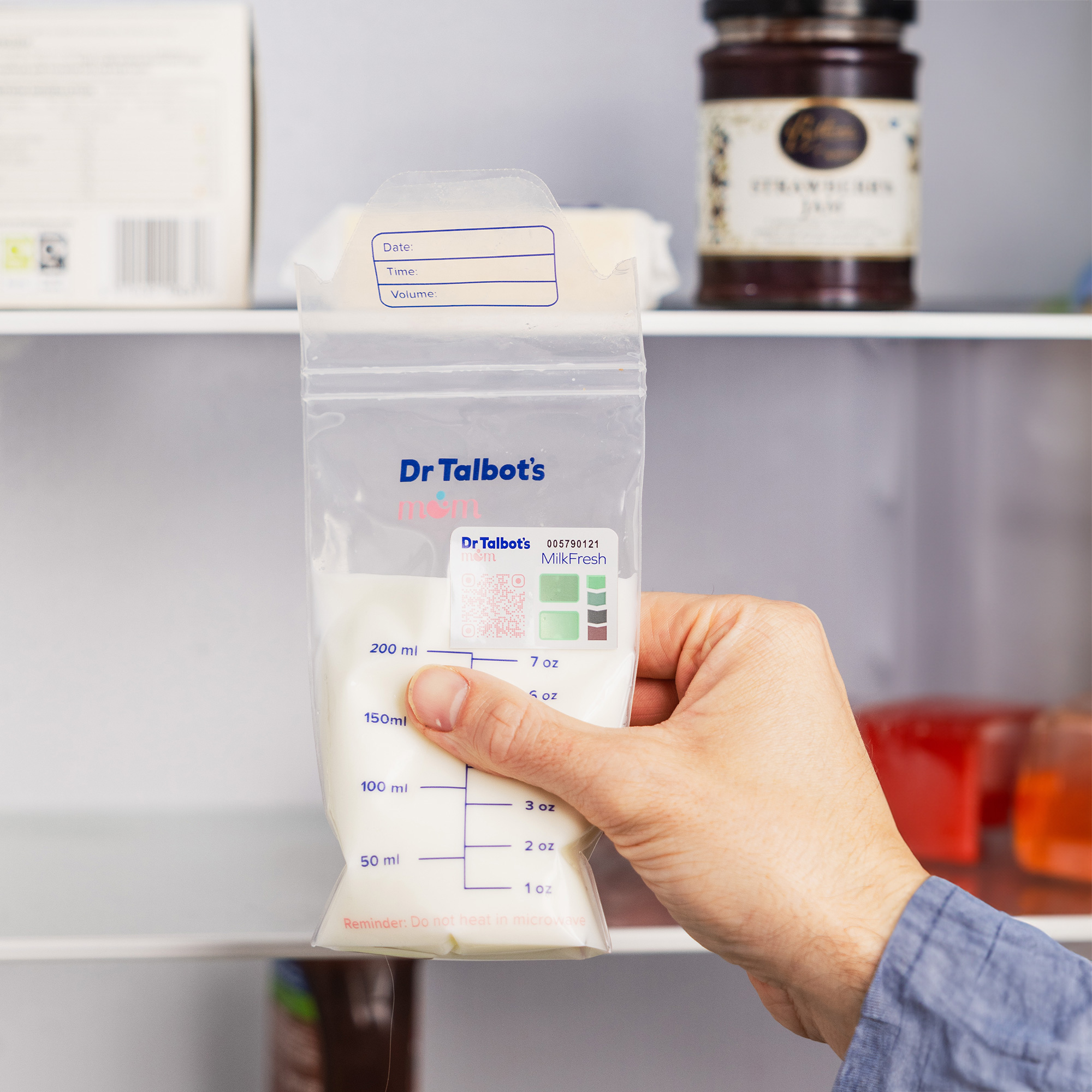Warming breast milk correctly is important in ensuring your baby gets the maximum nutritional benefit while also keeping feeding time safe and stress-free. Whether you're using freshly pumped milk or thawing milk from the freezer, it's important to follow the right process to avoid overheating or wasting precious milk. Here’s everything you need to know about how long to warm up breast milk, along with tips to make the process smoother for you and your baby.

How Long to Warm Up Breast Milk
The time it takes to warm breast milk can vary depending on the method you use. But generally, it only takes a few minutes to get the milk to the right temperature:
Using Warm Water: Place the sealed milk container or milk storage bag in a bowl or sink of warm water for about 3–5 minutes. Ensure the water is warm, not hot—aim for a temperature similar to your skin (around 98°F).
Using a Bottle Warmer: Follow the manufacturer’s instructions. Most bottle warmers will heat milk within 2–4 minutes, making them one of the quickest and most efficient methods.
Tip: Always test the milk temperature after warming before feeding. Place a few drops on the inside of your wrist—it should feel lukewarm, not hot.
How to Best Warm Up Breast Milk
To warm up breast milk properly, follow these easy steps:
Step 1: Thaw Frozen Milk
If you're defrosting frozen breast milk, make sure to thaw it safely before warming. The best methods are:
In the refrigerator: Let the milk thaw overnight or for 12–24 hours to maintain its quality.
Under lukewarm running water: If you’re in a rush, hold the sealed bag or bottle under lukewarm running water. This method usually takes 5–10 minutes.
Step 2: Warm the Milk
Once your milk is thawed, or if you’re using freshly expressed milk, choose your preferred warming method:
Warm water method: Place the bottle or bag in warm water for 3–5 minutes.
Bottle warmer: A convenient and reliable method for consistent results.
Step 3: Swirl the Milk
After warming, gently swirl the milk to redistribute any fat that may have separated during storage. Avoid shaking the milk, as it can break down nutrients.

How Long to Keep Warmed-Up Breast Milk
Once breast milk is warmed, it’s important to use it promptly. Here’s what you should know:
Warmed milk should be used within 2 hours. After that, the milk should be discarded to ensure freshness and prevent bacterial growth.
Don’t leave milk at room temperature for too long. Keeping milk at room temperature for more than 2 hours increases the risk of harmful bacteria growing, which could lead to illness for your baby.
Always be mindful of the timing to ensure the milk remains safe to consume.
Tips for Efficiently Warming Breast Milk
To make the warming process easier and faster, try these helpful tips:
Label your milk: Label your milk with the date and time of expression before freezing. This way, you can avoid confusion and ensure you’re using milk in the correct order.
Use an insulated bottle warmer: These are a great solution when you’re on the go or need to warm milk during nighttime feedings. They’re portable and efficient, keeping milk at the perfect temperature.
Avoid over-warming: Always remember that breast milk warms quickly, and overheating can lead to a loss of nutrients. Stay patient and check the milk frequently to avoid any issues.
Thaw in small portions: Store your milk in 2-4 ounce portions to help it thaw faster and minimize waste.
What to Avoid When Warming Breast Milk
While warming breast milk may seem simple, there are several practices you should avoid to ensure the milk stays safe and nutritious:
Microwaving: Microwaves heat unevenly, causing hot spots that can burn your baby. They also destroy essential nutrients in the milk, which is why this method should be avoided entirely.
Boiling water: High heat from boiling water can degrade the quality of breast milk, breaking down proteins and antibodies that are vital for your baby’s development.
Rewarming milk: Once milk has been warmed, it should not be reheated. If your baby doesn’t finish the milk, it should be discarded after 2 hours to avoid bacterial contamination.

FAQs: How Long to Warm Up Breast Milk
How long does it take to warm breast milk using a bottle warmer?
It typically takes about 2–4 minutes, depending on the model of the warmer. Follow the manufacturer’s guidelines for best results.
Can I keep breast milk warm for more than 2 hours?
No, it’s recommended that warmed breast milk be used within 2 hours to prevent bacterial growth and ensure safety.
How long should I warm breast milk in a bowl of warm water?
3–5 minutes is usually sufficient, but you can leave the milk in the warm water a little longer if needed. Just be sure the water isn’t too hot.
What’s the best way to warm up breast milk quickly?
Using a bottle warmer is the fastest and safest method. Warm water can also be effective, but bottle warmers provide a more controlled environment.
How do I know if the milk is at the right temperature for feeding?
Test a few drops on your wrist. The milk should feel lukewarm to the touch, not hot. If it feels too hot, let it cool down before feeding your baby.
Conclusion
Warming breast milk properly is an essential part of feeding your baby, as it preserves the milk’s nutrients and ensures safety. Whether you're using warm water, a bottle warmer, or just thawing it in the fridge, it’s important to follow the right steps to ensure that your baby gets the most from each feeding.
Remember to always test the temperature before feeding, and avoid methods like microwaving that can damage the milk’s quality. With a little preparation and the right tools, warming breast milk becomes a smooth and easy process, allowing you to focus on the most important thing—bonding with your baby.